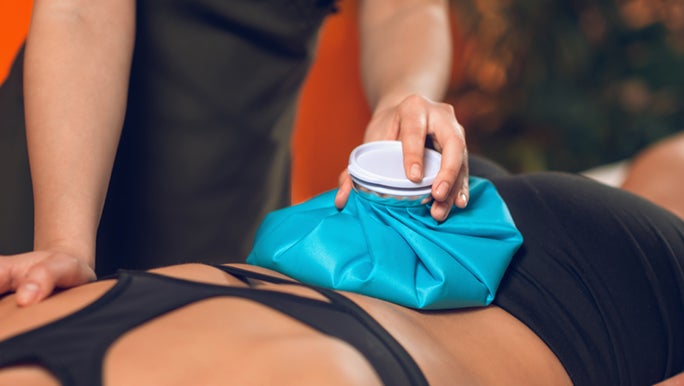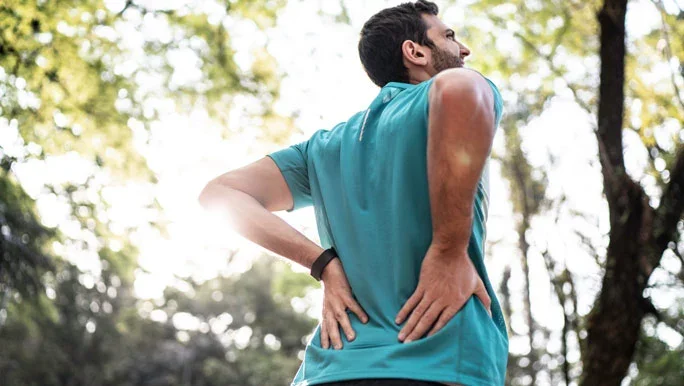Have you ever decided to become an active person and started exercising with gusto? You’ve always known why exercise is important but now you’re actually prioritising it.
However, despite enjoying all the benefits of walking, running, stretching or those pump exercise videos you’ve been doing at home, it all suddenly comes to a screaming halt. Why? Lower back pain.
When lower back pain strikes, some people use ice or heat to help them. But how do you know which one to use?
We asked physiotherapist Brad McIntosh for some expert advice.
Using ice for lower back pain
According to Brad, icing likely has a small influence on the inflammatory processes and cellular changes in body tissues close to the skin surface after an injury. While this may have some impact on the way the body deals with things like lower back pain, he says the main impact of icing is on the perception of pain.
“The brain registers and feels the cold messages coming through from the skin nerves, and this reduces the awareness of underlying pain messages coming from other structures,” Brad says.
Brad explains that icing is effectively a distraction technique that increases your pain threshold and works while ice is on the skin and for a short period of time afterwards.
“This effect often allows you to move better as a result of less pain, and it is this more-normal movement that may well be the most-important therapeutic aspect of ice application,” he advises.
From a research point of view, Brad notes there’s no conclusive evidence that ice is more helpful for low back pain than a placebo. But this may be in part due to the small number and low quality of the research conducted.
Brad says that ice is simple to apply, very low cost, very low risk (apart from ice burns) and is usually quite helpful in temporarily relieving pain. You could use commercial wraps, belts, sprays and creams to apply ice or experience a cooling effect.
He recommends applying ice in shorter blocks and repeating regularly. For example, 15 minutes, every 2 hours.
But he also advises that you “make sure that ice isn’t damaging your skin by checking it after 30-60 seconds, and don’t use ice if your nerves are damaged, or you don’t have normal feeling in the area.”
Using heat for lower back pain
As Brad explains, heat application is also very simple to apply and low cost. You could use commercial wraps, belts, sprays and creams to apply heat or experience a warming effect. He says that his patients anecdotally report that heat works better than ice in most cases to ease their pain.
“The heat will increase the flexibility of your tissues, produce some mild-moderate pain relief, increase blood flow to the area (close to the skin) and help to relax tight, cramped muscles. It also has a distraction element similar to the application of ice,” Brad says.

For lower back pain, ice is simple to apply, very low cost, very low risk (apart from ice burns).
Be careful when using ice or heat for lower back pain
Brad says it’s important when using heat or ice to keep an eye on how your skin is coping and take a break if you notice any discolouration, burning or itching.
“Both heat and cold can cause discolouration of the skin when applied at extreme temperatures or for prolonged periods. This discolouration occurs when you apply heat for long periods at temperatures that are not high enough to burn the skin. Ice burn can create a similar skin discolouration,” he explains.
When to seek help
As advised by the Australian government’s Health Direct, “If you have back pain and have lost feeling or movement in your limbs or are having problems controlling your bowels or bladder, call triple 000 immediately and ask for an ambulance.”
You should see your doctor or other health care professional for further advice if:
- your pain bothers you
- your back pain doesn’t improve after a few weeks or worsens
- you have symptoms such as weight loss, tingling or numbness in the legs or problems with bladder and/or bowel control
- you have weak or brittle bones
- you have a history of certain chronic diseases
- you are prone to infection
- you use intravenous drugs
Related:
Brad McIntosh is a highly-trained and well-regarded physiotherapist with a particular clinical and research interest in knee rehabilitation.
Reviewed by the healthylife Advisory Board October 2021.

